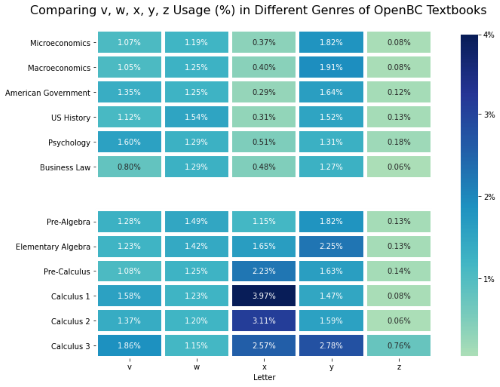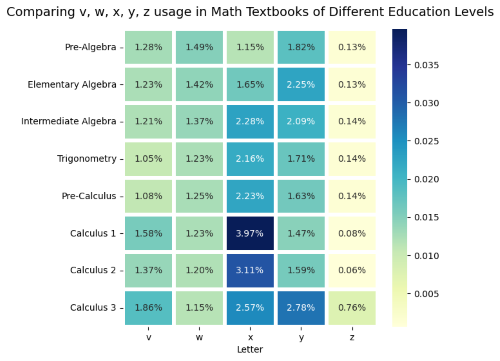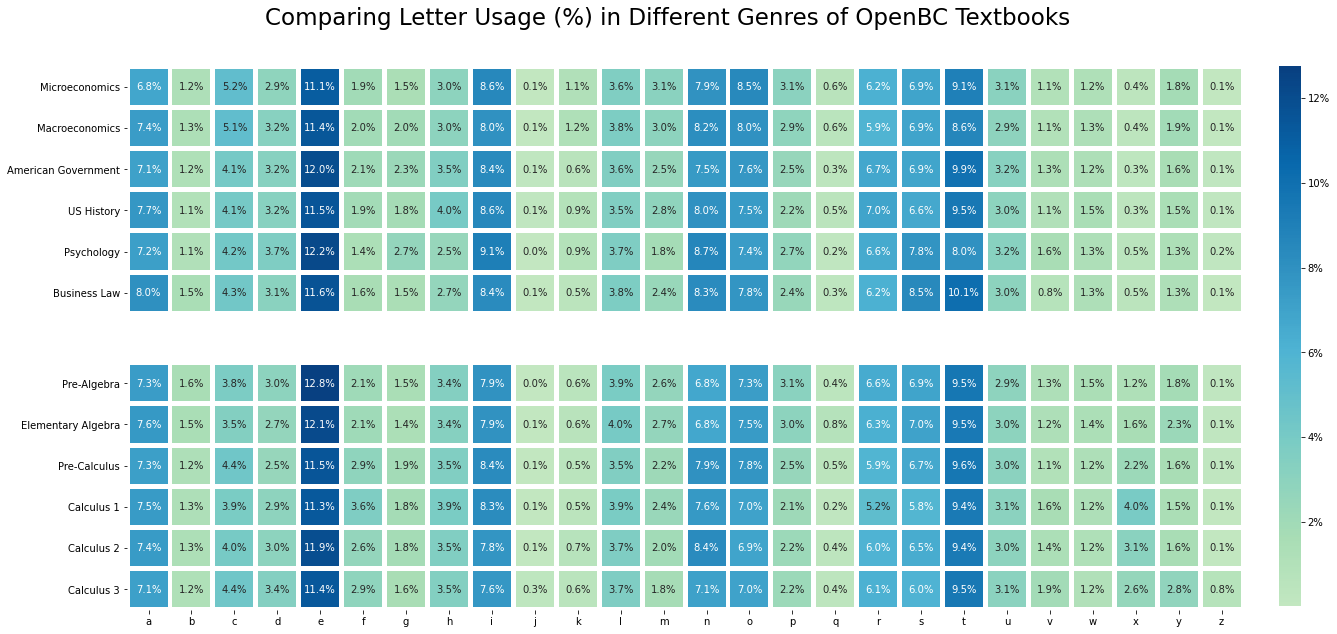Upon using various math textbooks throughout my first few years of university studying Statistics & Computer Science, I was (like many others) truly humbled by the use of letters in higher level mathematics. It starts with "f", "x", and "y" in high school, then we add on "z" and "w" in university calculus, then a bunch of "a", "b", "c" for arbitrary integers and "g" and "h" for relations & functions in discrete mathematics.
The extremely common use of "x" and "z" in math, but extremely uncommon use of those same letters in the everyday language (except "x-ray" or "xylophone", maybe) led to my main question:
-
Are there significant differences between letter usage patterns of math textbooks and mainstream forms of written media?
-
Are there differences in letter usage patterns between mathematics textbooks and textbooks in other fields?
-
Are there significant differences in letter usage between mathematics textbooks of the same topic but of different difficulty levels?
- Are there any correlations between letters and their frequencies? (E.g. A positive correlation between x usage and z usage)
- Could a classification algorithm be trained on all the textbooks to determine if a textbook is a math one, or a non math one, simply based on the letter frequencies? Or a classification algorithm for textbook or non-textbook?
- To explore how I read online textbooks using Python, see "Math Textbooks vs The World [1] - Data Collection".
- To see the exploratory data analysis, see "Math Textbooks vs The World [2] - Data Exploration"
- To explore the answers to the above questions, see "Math Textbooks vs The World [3] - Data Analysis" (In Prog.)
- The language usage of most letters in the alphabet is quite similar in math textbooks and non-math textbooks, as illustrated in the leading figure.
- The most significant difference is the letter x. Math textbooks used it more than 5 times more on average (yes, I doubled checked the numbers).
- On average, the letters that were more common in math-y texts than in non-math-y texts were x (+523%), z (+99%), f (+49%), and y (21.8%) in relative measures.
- Letters that were more common in non-mathy texts were k (+46%), g (+16%), m (+15%), and c (+13%), in relative measures.
- The biggest difference of non-mathy and math-y books is between v-z, as shown below

- With harder math textbooks, there is generally an increase of v, x, and z usage, but it's not very consistent.

The mathematics textbooks explored include algebra, calculus, and statistics, and will mostly use textbooks by the same team for different year levels. The non-mathematics textbook topics were US History, Business Law, Sociology, Economics, and Psychology. All textbooks used were open source, and from the following websites:
